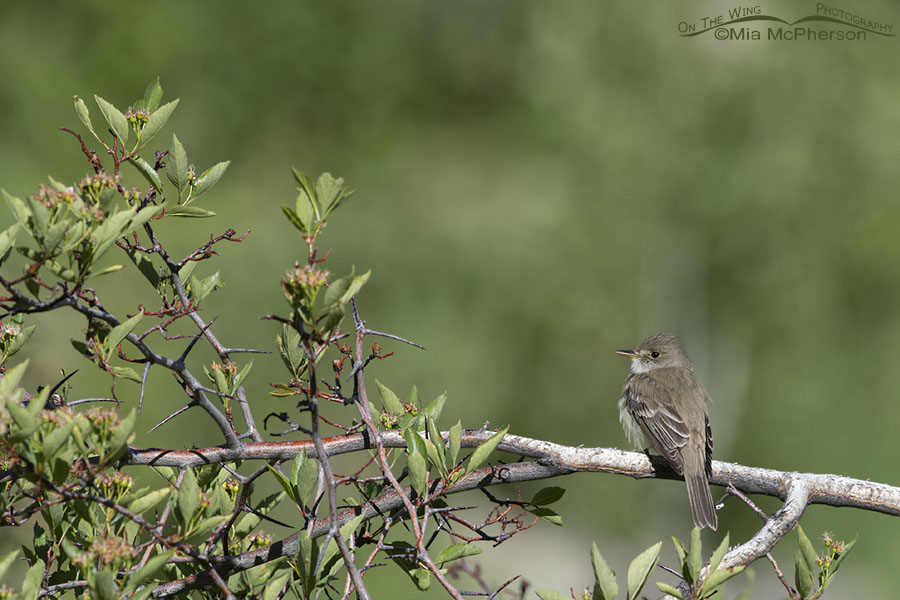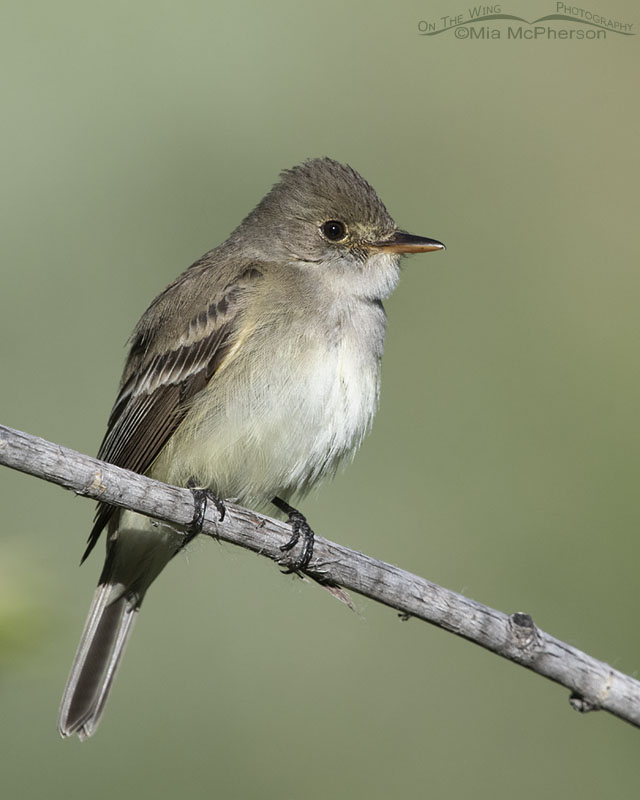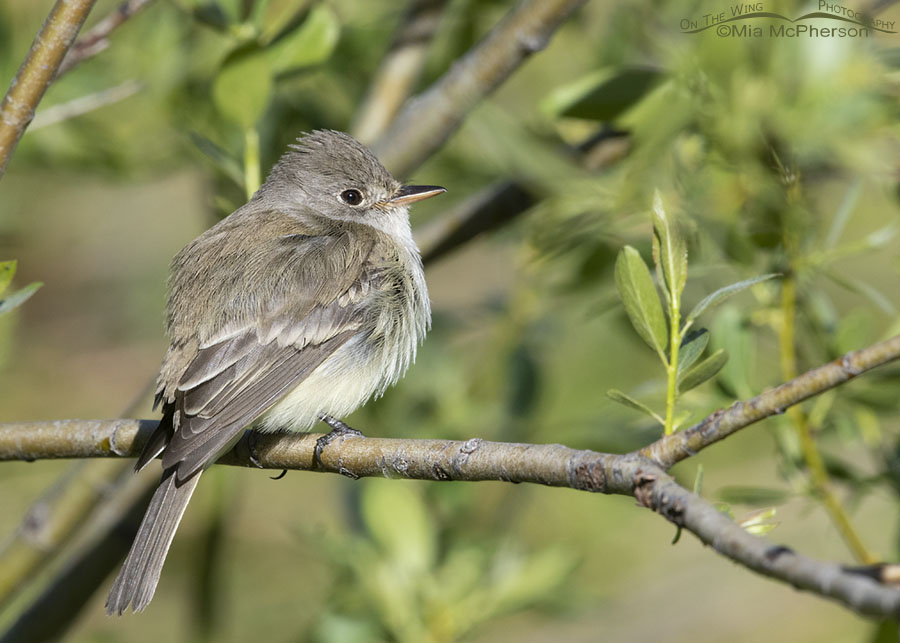 Adult Willow Flycatcher perched on a Hawthorn – Nikon D500, f7.1, 1/1250, ISO 400, Nikkor 500mm VR, natural light
Adult Willow Flycatcher perched on a Hawthorn – Nikon D500, f7.1, 1/1250, ISO 400, Nikkor 500mm VR, natural light
To photograph Willow Flycatchers you have to find them which means you need to be in their range and in their habitat which during the breeding season includes lakeshores, streams, swamps, riparian zones, creeks, and areas with stands of willows near running or standing water.
Once I’m in Willow Flycatcher habitat the next thing I do is to listen for them. I often hear Willow Flycatchers before I see them because they can blend into their habitat well.
Note: Empids can be hard to ID because they all look so much alike but with Willow Flycatchers their FITZ-bew calls can clinch the ID.
 Adult Willow Flycatcher close up – Nikon D500, f7.1, 1/2000, ISO 640, Nikkor 500mm VR with 1.4x TC, natural light
Adult Willow Flycatcher close up – Nikon D500, f7.1, 1/2000, ISO 640, Nikkor 500mm VR with 1.4x TC, natural light
For years I would hear Willow Flycatchers in some of the Wasatch Mountain canyons I go to and sometimes I’d even catch a glimpse of them way off in the distance and infrequently I’d see them up close but they would be gone by the time I could get set up to photograph them.
I know from experience that just driving through their territory isn’t going to get me the photos I want. I have to make more of an effort than that.
I have learned to locate these flycatchers by using my eyes and ears and once I hear or see them I stop and observe them. From personal observations of this species I know that Willow Flycatchers often have a favorite perch or perches within their territories so if I am am able to locate their favorite perch close enough to the road I can move my “mobile blind” near it, park, be patient, watch and wait for the flycatcher to fly back in.
Note: I am usually on dirt and gravel back roads and I always pull off of the roads as far as I can so I don’t obstruct traffic. Part of that is about being safe and the other is so I can focus primarily on the birds and not so much on any vehicles that might get close to me.
 Resting adult Willow Flycatcher in willows – Nikon D500, f9, 1/800, ISO 640, Nikkor 500mm VR with 1.4x TC, natural light
Resting adult Willow Flycatcher in willows – Nikon D500, f9, 1/800, ISO 640, Nikkor 500mm VR with 1.4x TC, natural light
This approach in addition to using a “mobile blind” has functioned effectively for me but I have to say that being patient and observant are primary keys. I do have to wait for the flycatchers to come back in and that can take a while.
There are times I need to move the “mobile blind” around a little so that I can get clear and unobstructed views of the Willow Flycatchers on their favorite perch or perches, I usually do that after they have flown off in search of prey to to chase other flycatchers out of their territory.
Willow Flycatchers will soon be winging their way into northern Utah and I am looking forward to their return.
Life is good. Stay safe.
Mia
Note: This approach also works with other bird species that use favorite perches.
Click here to see more of my Willow Flycatcher photos plus facts and information about this species.


Extraordinary detail. Perfect pic. Thanks Mia.
Thank you for this subtle charmer. And as always thank you for the link to their call. I like to hear it – and it messing with our resident cat’s mind which I also like.
Appreciate the info on the distinguishing fieldmark, its call!
These are beautiful. These little birds are so elusive. I think there were some along the Santa Clara River, but they would not come out of the dense willow along the banks.
Nice shots…esp the last…
What fantastic shots you got of the Willow Flycatcher. Wow.